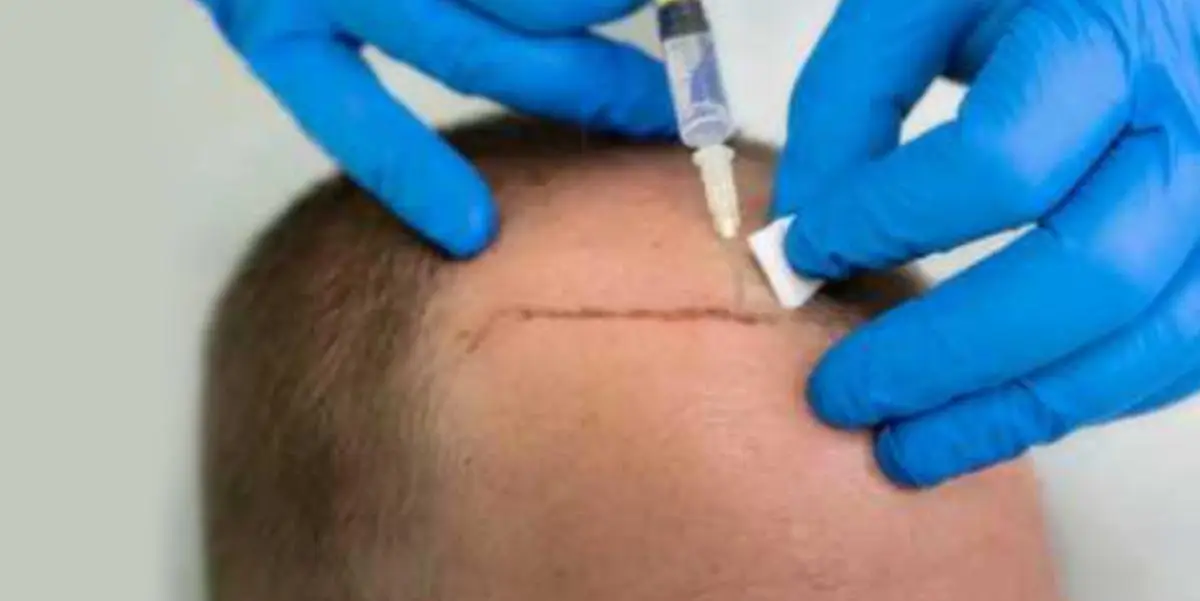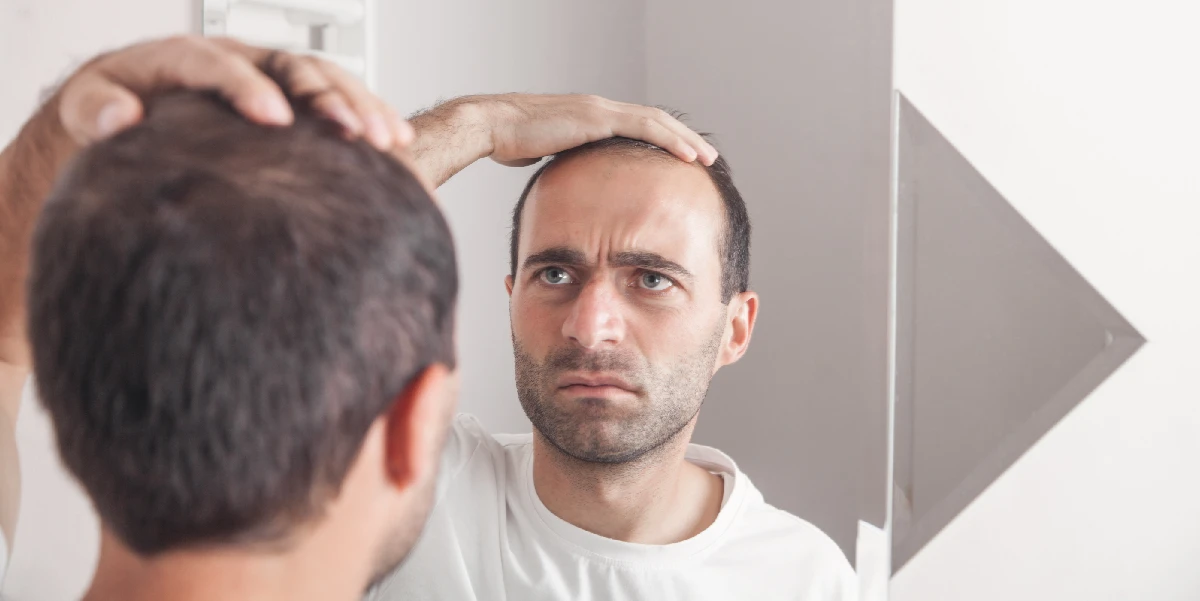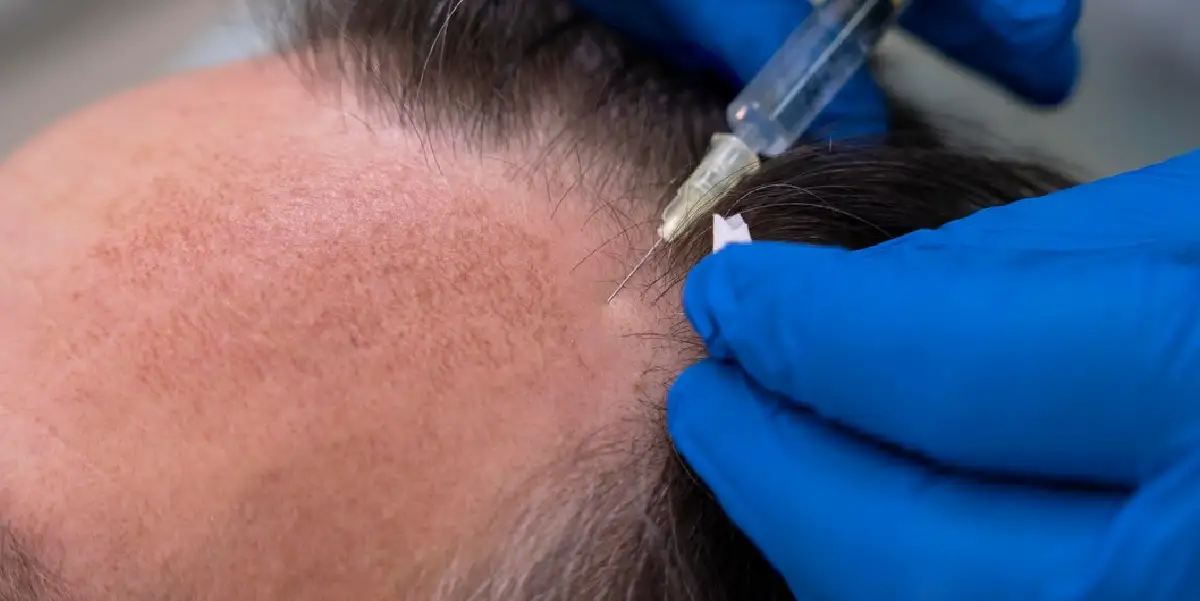Is a Hair Transplant Painful?
- By Harleys Clinic
- Oct, 26 2023
Any patient undergoing cosmetic or plastic surgery is concerned about the pain related to it. They want to avoid pain during any medical or surgical cosmetic procedure. Mainly, if the procedure is elective or aesthetic, it stands to reason that patients frequently ask about pain during hair transplant surgery. Specifically, they want to know if a hair transplant is a painful procedure or if they will feel any pain after surgery.
This blog includes the information provided by our expert hair surgeon, Dr. Sumit Agarwal. The aim is to provide readers detailed insights about the pain related to the hair transplant procedure. Dr. Sumit Agrawal the founder of Harleys Hair Transplant clinic is known for offering the best hair transplant in Mumbai, India.
Is a Hair Transplant Painful?
Hair Transplant is not a painful procedure. However, this does not mean that there is no discomfort at all. Even the most minimally invasive medical procedures have some degree of pain, and a hair transplant is no exception. Luckily, the discomfort is brief and temporary.
Most patients report tolerable pain and describe a hair transplant as a smooth and somewhat pleasant experience. Although it may be an enjoyable experience, patients should still understand what this involves and what sort of discomfort they may feel before, during, and after surgery.
Anaesthesia During Hair Transplant
- Since Hair transplantation is performed under local anaesthesia, no pain is felt during the procedure. However, slight pain may be felt during the anaesthesia injections, but not anything after that.
- Some discomfort may be there for about a day after grafting when the effect of local anaesthesia wears off. The discomfort you will feel will be kept to a minimum with the painkillers that will be prescribed.
- In addition, redness, pain, and swelling in the grafted area may be felt for a few days after the procedure. It should be noted that most patients are given anti-inflammatory medicines to reduce the swelling.
- When the procedure is started, there will be some prick sensations while local anaesthesia injections are made. The level of pain you will feel is very close to the pain of needles, similar to pain when you go to the dentist.
- You may feel a tightness on your scalp during the procedure. This tightness is felt more in grafting made with the FUT(strip) technique. With the FUE technique, the feeling of stretch does not cause discomfort to the patients.
- Since the pain threshold varies from patient to patient, some people describe this feeling of stretch as “mild pain,” while many of our patients say that they feel almost no discomfort.
Hair transplantation aims to improve the aesthetic appearance. The level of satisfaction with the procedure is relatively high, and this causes many patients to accept temporary side effects such as redness and pain.
To provide the best hair transplant in India, we at our clinic provide various magazines, books, music, etc., which are kept at our clinic. So that patients who have had the treatment do not become bored and do not lose concentration during the procedure. In addition, the treatment chair is specially designed for hair transplant patients to feel comfortable throughout the procedure.
Before Hair Transplant Surgery
- Before the start of the procedure, the patient is provided with an anti-anxiety pill, which helps him remain calm during the procedure.
- The anaesthesia process is explained to allay any apprehensions.
- The local anaesthesia injections are given slowly over the donor area with the finest 31G In-su-lin needle. Diabetes patients use the same needle for self-injection of Insulin.
- The nurse assistant uses a hand vibration tool to mask/ divert the prick sensations.
- Once the scalp is anaesthesied, a patient feels no pain throughout the entire day.
The process of local anaesthesia to the full scalp is done in two parts: first, injections to the donor area on the back, where we take the grafts from, and then injections in the recipient area on the front, where we will implant the new grafts. Anaesthesia in the donor area happens at the start of the surgery.
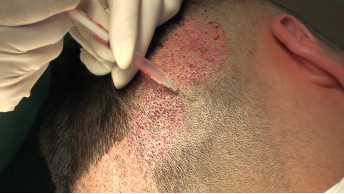
Injecting Anaesthetic in the donor area.
- The first thing the doctor will do the morning of surgery after the hairline is clearly marked and the scalp is cleaned and trimmed is numb the donor area.
- Using a local anaesthesia — similar to the injections the dentist uses to numb for dental work — the doctor will inject small amounts of the medication across the entire donor region.
- The injections are superficial and done slowly using a very fine needle. Because of this, pain is minimal.
- Most patients relate it as a slight “pricking” sensation quickly followed by numbness as the medication “sets in.”
- While it takes around 1-2 minutes for the anaesthesia injections to take full effect, most patients start feeling numb within seconds.
- After this, no pain sensation is felt in the donor region.
- The doctor can extract the tissue — either via the Follicular unit excision (FUE) or FUT/ Strip technique — without the patient feeling any pain.
- The Anaesthesia effect typically lasts for 3-4 hours and may need to be supplemented after half day/ lunch break before it wears off and patients may experience discomfort.
During Surgery
As described above, patients will feel nothing during the extraction aspect of surgery after the local anaesthesia is applied. A hair transplant surgery in Mumbai, done at our clinic, is accomplished in two stages:
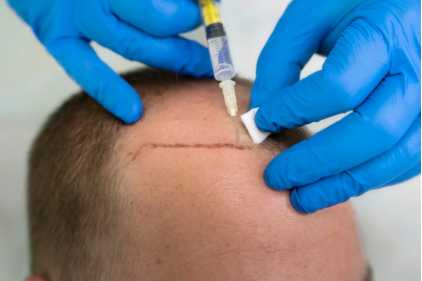
Injecting Anaesthetic medication into the recipient area.
Removal of the grafts from the donor and re-implantation of the grafts in the recipient areas (the balding and thinning regions).
- Like the donor region, the recipient region must be anaesthetised before the surgeon can make incisions, and the grafts can be implanted into the scalp.
- This process is identical to the donor anaesthesia; the doctor will inject the same local anaesthesia into the recipient region (directly in front of the forehead, a few millimeters in front of the hairline), and the entire scalp will be numb within a few minutes.
- After the anaesthesia sets in, the surgeon and nurses can work in the area without the patient feeling any pain. The injections in the recipient region are the last thing the patient will handle for the entire day.
- After this, the entire scalp is completely anaesthetized from the front of the forehead to the donor in the back. The entire surgery can now be completed without any discomfort.
- While the patient may want to readjust and take breaks to the washroom and walk around to avoid the discomfort of sitting for a long period, there will be no uneasiness from the surgery itself. However, if the patient starts to sense pain, he or she will inform the staff, and the surgeon will supplement anaesthesia.
After Surgery
As we now understand, patients will not have pain during surgery after the anaesthesia is injected, but what after surgery? What happens after the anaesthesia effect wears off? Generally, patients report very mild discomfort but no pain after surgery as well.
- The nurse will start painkiller medications to patients from the afternoon of surgery & have to be repeated in the early evening.
- If the patient takes the oral medication as instructed before the numbing wears off, they should transition nicely and feel no discomfort. They will then take the prescribed pain meds the night of surgery and go to bed pain-free.
- The following day, the painkiller has to be repeated after breakfast. The vast majority of patients report feeling no pain and do not need any medication after 5 days from surgery.
- If they experience slight discomfort, they can take pills for a few days at night to get a good sleep. However, this is only for excessive pain, and most patients do not even need this.
To conclude, the answer to the question, is a hair transplant painful? Thanks to local anaesthesia and post-operative pain medications, a hair transplant is not painful. While no surgery can be completely painless and some brief level of discomfort is possible, a hair transplant is typically a pleasant and smooth experience for most hair loss patients. In order to provide the best hair transplant in Mumbai at Harleys Hair Transplant Clinic, our surgeon and the expert support staff ensure that the process is as less painful as could be for the patients.
If you have finally decided on getting a hair transplant and are contemplating whether it would be worth the pain and effort, then it is advisable to consult our hair transplant surgeon, Dr. Sumit Agrawal. He is a well-known surgeon in India for performing the most effective and natural-looking hair transplant. Additionally, considering his expertise and passion for the hair restoration field, he is also acclaimed for offering the best hair transplant in Dubai.
The skilled specialist makes a proper diagnosis and recommends appropriate treatments or lifestyle modifications to address the issue. To avail of the benefits, book a consultation with the expert now!

